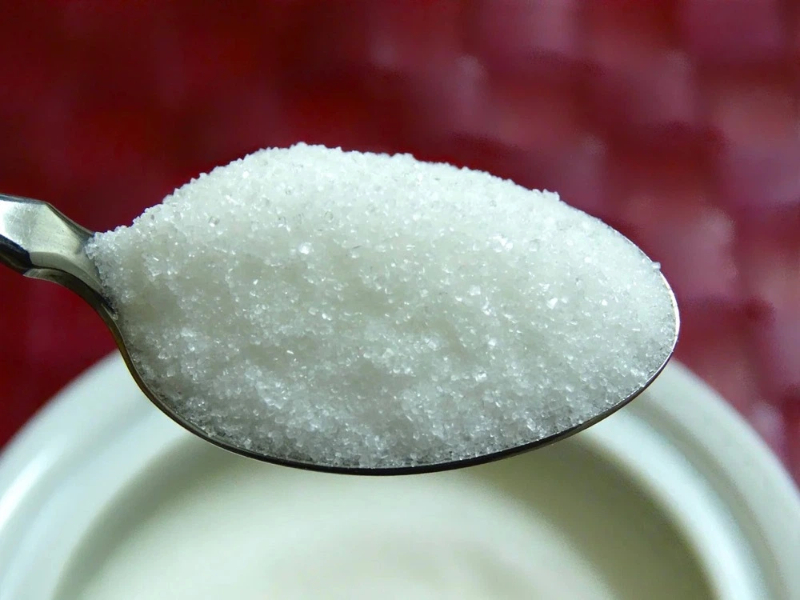







Content Menu
● Metabolism and Biochemical Considerations
● Regulatory and Scientific Assessments: A Global View
● Human and Animal Evidence: What the Data Show
● Implications for Health-Ingredient Solutions and Industry Practice
● Common Misconceptions and Clarifications
● FAQ
>> 1. What is the regulatory stance on Aspartame safety?
>> 2. Does Aspartame cause cancer?
>> 3. How does Aspartame metabolism work, and why is formaldehyde mentioned?
>> 4. Should special populations avoid Aspartame?
>> 5. How should the industry communicate Aspartame safety to consumers?
Is Aspartame toxic? The question sits at the intersection of toxicology, epidemiology, regulatory science, and public communication. Over the past several decades, aspartame has been subjected to extensive safety reviews by national and international authorities, and yet debates linger in scientific circles and popular discourse. The aim of this article is to synthesize current evidence, translate complex findings into actionable insights for manufacturers and policymakers, and present a balanced view that acknowledges uncertainties without overstating risk. The discussion centers on Aspartame, its metabolism, the quality and relevance of animal and human studies, regulatory conclusions, and the implications for product development, labeling, and consumer education within the context of health-ingredient solutions for foods, beverages, and healthcare products.

Aspartame is a low-calorie artificial sweetener used widely across beverages, dairy products, baked goods, confectionery, medicines, and a growing array of dietary supplements. Chemically, it is L‑α‑aspartyl‑L‑phenylalanine methyl ester, and it is rapidly hydrolyzed in the gastrointestinal tract into its constituent parts: phenylalanine, aspartic acid, and methanol. This metabolic pathway underpins most safety assessments, because the individual metabolites are well characterized in terms of physiology and toxicology. The pervasive presence of Aspartame in consumer products makes understanding its safety essential not only for regulators but also for manufacturers who rely on it to deliver taste, mouthfeel, and caloric control while maintaining regulatory compliance and transparent consumer communications.
- Rapid hydrolysis and metabolite exposure: After ingestion, Aspartame is quickly cleaved to phenylalanine, aspartic acid, and methanol. The pharmacokinetics of these breakdown products are well described, and the resulting systemic exposure to each metabolite is a central focus of safety evaluations. The overall exposure from typical dietary intake is far below thresholds associated with adverse effects for the general population. This basic mechanistic framework is a cornerstone of regulatory confidence in Aspartame's safety at approved levels.
- Methanol and formaldehyde: Methanol, arising from Aspartame metabolism, can be further oxidized to formaldehyde and formic acid. The amounts generated are small relative to natural methanol exposure from fruits, vegetables, and other dietary sources. Safety assessments consistently indicate that these metabolic byproducts do not reach concentrations linked to harm at usual consumption levels. Nonetheless, the theoretical possibility of formaldehyde formation remains a point of discussion, particularly when considering high-dose exposure or sensitive subpopulations.
- Blood-brain barrier and neuronal considerations: Some inquiries have explored whether Aspartame or its metabolites might influence neuronal lipid metabolism, mitochondrial function, or neurochemical signaling. Emerging mechanistic studies in neural cell models point to potential cellular stress responses under certain conditions, which underscores the need for cautious interpretation when extrapolating to human health outcomes. The broader consensus remains that typical dietary exposure to Aspartame does not cause clinically meaningful neurotoxicity in the general population, though continued research in this area is warranted.
- Regulatory consensus and safety envelopes: Major health authorities and expert panels have repeatedly concluded that Aspartame is safe for the general population at established daily intake levels. The concept of an acceptable daily intake (ADI) is central to these conclusions, providing a conservative benchmark that accounts for interindividual variability, vulnerable subgroups, and lifetime exposure. The ADI values vary by jurisdiction but are typically on the order of tens of milligrams per kilogram of body weight per day, reflecting substantial safety margins.
- Cancer risk signals and risk communication: Some studies and reviews have reported associations between Aspartame consumption and cancer biomarkers or specific cancer outcomes. However, these associations are not consistent across studies, often subject to confounding variables, exposure misclassification, and methodological limitations. The prevailing interpretation is that there is no robust causal link between typical Aspartame intake and cancer in humans, especially when intake remains within regulatory limits. Nevertheless, these signals have driven precautionary considerations in some regulatory jurisdictions and have spurred calls for additional long-term, well-controlled studies to refine understanding.
- IARC, WHO, and JECFA positions: The IARC has classified Aspartame as possibly carcinogenic to humans (Group 2B) based on limited evidence in humans for a narrow set of cancer outcomes and limited animal data. This designation signals that some evidence exists but is insufficient to establish causality, and it should be interpreted within the broader corpus of toxicology and exposure data. JECFA reaffirmed the established ADI and continued to call for ongoing surveillance as new data emerge. The WHO/FAO joint assessments emphasize that at real-world exposure levels, Aspartame safety remains credible, while highlighting the need for continued research into long-term effects and potential interactions with metabolic health.
- FDA and regional regulators: The FDA and European regulators, among others, publish reflections that aspartame safety conclusions are contingent on exposure below the ADI and awareness of population-specific considerations (such as phenylketonuria). Communications emphasize that the absence of evidence of harm at standard use should not be misconstrued as evidence of absolute safety in all contexts, particularly for high-risk groups or unusual consumption patterns.
- Emerging research and the evolving landscape: New studies, including those leveraging omics technologies or advanced epidemiological designs, continue to explore the nuanced relationships between Aspartame, the gut microbiome, metabolic health, cognitive function, and neurodegenerative risk. While some results hint at potential mechanisms or associations, the overall weight of evidence remains inconclusive for broad public health conclusions, reinforcing the importance of robust, reproducible research and transparent risk communication.

- Animal toxicology: Animal studies have historically contributed to safety evaluations, particularly in establishing dose–response relationships and identifying organ-specific effects. While isolated studies have reported adverse outcomes at high doses, replication across diverse laboratories and species tends to temper these findings, and translational relevance to humans at typical dietary exposures remains a critical consideration.
- Human epidemiology: Population-based studies offer heterogeneous results. Differences in dietary assessment methods, misclassification of intake levels, and confounding lifestyle factors complicate causal inferences. The consensus derived from large-scale evaluations tends to support no convincing link between standard Aspartame consumption and cancer risk or other major health harms in the general population. However, certain subgroups or high-exposure scenarios deserve targeted investigations to confirm or refine risk estimates.
- Cognitive and neurobehavioral outcomes: A growing body of literature examines cognitive trajectories and mood or neurobehavioral endpoints in relation to artificial sweeteners, including Aspartame. Some studies suggest associations with cognitive aging markers or mood alterations, while others find no significant effects. The heterogeneity of findings highlights the complexity of isolating dietary sweeteners' contributions to brain health against a backdrop of age, genetics, lifestyle, and comorbidities.
- Product development strategies: In the context of a China-based factory supplying health-ingredient solutions to global manufacturers, Aspartame remains a viable option for formulators seeking low-calorie sweetness, stability across processing conditions, and consumer acceptance. The choice to use Aspartame should align with target markets' regulatory statuses, labeling requirements, and consumer expectations regarding PKU-related warnings.
- Compliance, labeling, and consumer information: Transparent labeling that indicates the presence of Aspartame where required, along with clear phenylalanine-related guidance for PKU-affected individuals, supports regulatory compliance and consumer trust. Effective communication should balance scientific nuance with accessible messaging about ADI-based safety and ongoing research.
- Manufacturing considerations: From a process engineering perspective, Aspartame's compatibility with beverage formulations, encapsulation for tablet production, and stability under varying processing conditions are key factors. Blended sweetener systems can optimize taste profiles, reduce sodium nitrite or sugar content, and maintain functional performance while meeting regulatory constraints.
- Public health messaging and risk communication: Industry plays a critical role in educating stakeholders—regulators, retailers, and consumers—about the current evidence base, the meaning of ADI, and the gaps that warrant further study. Providing sources, summaries of safety assessments, and accessible explainers can help prevent misinterpretation and foster informed choices.
- Misconception: "Aspartame is universally toxic regardless of dose." Reality: Regulatory bodies consistently conclude safety within established intake levels for the general population, though ongoing research may refine understanding in specific contexts.
- Misconception: "Any exposure to formaldehyde from Aspartame metabolism is dangerous." Reality: The metabolic conversion produces formaldehyde in trace amounts, far below harmful thresholds at typical consumption.
- Misconception: "A single study proving risk is enough to declare danger." Reality: Robust risk assessment requires replication, dose–response evidence, mechanistic plausibility, and consideration of confounders across diverse populations.
Aspartame remains a permissible choice within a broad portfolio of health-ingredient solutions when used in accordance with established intake guidelines and regulatory labeling requirements. The safety consensus across major health authorities is buttressed by decades of toxicological testing, extensive human exposure data, and structured risk assessment processes. Yet, the scientific landscape continues to evolve: some recent studies and expert reviews point to potential biological effects or associations that merit further exploration, particularly in areas such as neurocognition, gut microbiome interactions, and cancer epidemiology. The prudent approach for manufacturers and suppliers is to integrate Aspartame-containing formulations within a broader strategy of rigorous quality control, transparent risk communication, and adaptive regulatory compliance. This means leveraging your core competencies in blended-sweetener development, tablet production, and OEM/ODM services to deliver products that meet taste, safety, and regulatory standards across international markets, while maintaining clear, evidence-based messaging about Aspartame's safety profile and the ongoing Nature of scientific understanding. The ongoing dialogue among researchers, regulators, and industry professionals will continue to refine risk estimates and inform best practices for product development and consumer guidance. In summary, Aspartame is not inherently toxic at typical consumption levels, but continued research, careful interpretation of evidence, and responsible communication are essential to ensure public health protection and consumer confidence.[1][2][3][4][9][10]

Major global regulatory authorities (such as the FDA, EFSA, and JECFA) all recognize the safety of aspartame within the limited intake range, but require products to clearly label phenylketonuria warnings.
According to the latest assessment by the International Agency for Research on Cancer (IARC), aspartame has been classified as "possibly carcinogenic to humans" (Group 2B), but authoritative regulatory authorities (such as the FDA and EFSA) still believe that it is safe to consume within the legal limit.
Aspartame can produce trace amounts of formaldehyde during metabolism in the body, but the output is much lower than that of many natural foods. Moreover, the human body can quickly eliminate it through normal metabolic pathways, so there is no need to worry about safety risks.
Yes, patients with phenylketonuria must strictly avoid it. Special groups such as pregnant women and children are advised to control their intake under the guidance of a doctor.
The food industry should be based on "safety recognized by regulatory authorities", and through clear labeling and popular science publicity, help consumers understand the core information that "it can be safely consumed within the legal limit".
[1](https://pmc.ncbi.nlm.nih.gov/articles/PMC12286081/)
[2](https://www.who.int/news/item/14-07-2023-aspartame-hazard-and-risk-assessment-results-released)
[3](https://www.foodwatch.org/en/new-studies-reinforce-health-concerns-over-aspartame-but-eu-action-still-missing)
[4](https://www.fda.gov/food/food-additives-petitions/aspartame-and-other-sweeteners-food)
[5](https://www.cnn.com/2025/09/03/health/artificial-sweetener-cognition-wellness)
[6](https://pubmed.ncbi.nlm.nih.gov/40608001/)
[7](https://www.neurology.org/doi/10.1212/WNL.0000000000214023)
[8](https://www.louisianacancercenter.org/news/aspartame-toxic-or-not)
[9](https://www.nature.com/articles/s41598-025-08898-z)
[10](https://www.nature.com/articles/s41598-024-62461-w)
